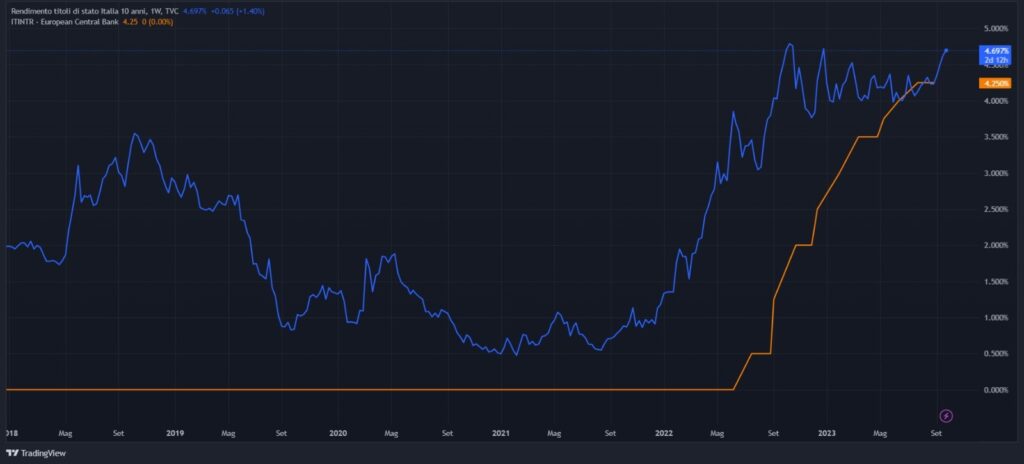
Inflation is certainly a central theme of recent times and the consequences it brings and the measures it requires to combat it are well known.
But let us now focus on its effects on fixed income products, strongly affected by market conditions for their nature.
What are fixed income instruments?
Fixed income securities are debt instruments that pay a fixed amount of income to the holder at regular intervals, typically in the form of interest coupon payments.
These instruments, generally issued by governments or corporations to raise capital, are bought to guarantee steady income and relatively lower risk compared to equity investments. However, if fixed income instruments do offer constant nominal returns, real returns can change on the basis of evolving market conditions.
The aim of this in-depth is to analyze the effects of high inflation on bonds and other similar fixed income securities as high inflation, characterized by a persistent surge in the general price level of goods and services, has the potential to disrupt the equilibrium of fixed income investments. It erodes the purchasing power of the income generated by these instruments, alters the dynamics of interest rate risk, and influences the pricing and valuation of bonds.
Fixed Income in a Changing Economy: Inflation’s Role
The return of such investments is directly linked to the interest rate at the moment of issuance. In other words, the interest rate or coupon rate that fixed income securities- notably bonds- offer, are typically set based on the prevailing inflation expectations and economic conditions at the time of issuance. This is because when inflation is high, central banks raise interest rates, to reduce the amount of money in circulation and restrain excessive borrowing and consumption, which can exacerbate inflationary pressures.
When inflation and interest rates are higher at the time of issuance, issuers often respond by offering higher coupon rates to investors. This is done to compensate investors for the anticipated erosion of the real value of their fixed income payments due to rising prices. In contrast, when inflation and interest rates are low, issuers may offer lower coupon rates, as there is less concern about the potential loss of purchasing power.
That is because on any occasion, investors require the real return, defined as what is earned on an investment after accounting for taxes and inflation, to be positive.
To contextualize, starting from March 2022, the Federal Reserve has been rising interest rates in order to keep inflation in check. In the following months this line was also followed by the European Central Bank. As a consequence, bond returns have been increasing. This linear relationship can be easily understood from the graph below where the orange line represents the European Central Bank lending rate and the blue line represents the return of a 10 year Italian BTP.

However, fixed income investments, by their nature, offer a predetermined interest rate that doesn’t adjust to changing market conditions. Hence, when interest rates rise, the demand and consequently the price for previously issued bonds decreases as they become less attractive when compared with newly issued bonds that exhibit the same characteristics (such as maturity and coupon frequency), but take into account the rise in interest rates.
When interest rates fall, the opposite is true.
This concept, known as “interest rate risk”, highlights the vulnerability of bond prices to fluctuations in interest rates.
Moreover, not all bonds (and other similar fixed income instruments) are affected by interest rates in the same way. The metric that measures the sensitivity to interest rate changes is known as duration. Generally speaking, bonds with longer maturity have longer duration and are more exposed to interest rate risk.
Conclusion
In conclusion, fixed income instruments, such as bonds, play a crucial role in the investment landscape, offering investors a predictable income stream and a refuge from the volatility of equities. However, their performance is intricately tied to prevailing economic conditions, particularly inflation and interest rates. By incorporating the concepts of duration and interest rate risk into their decision-making processes, investors can make more informed choices that align with their financial objectives and risk tolerances.
Join ThePlatform to have full access to all analysis and content: https://www.theplatform.finance/registration/
Disclaimer: https://www.theplatform.finance/website-disclaimer/



